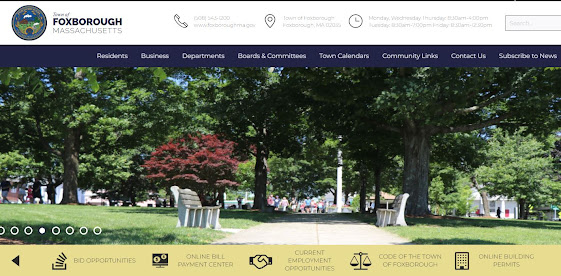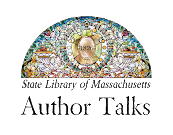During the month of May many children and their families celebrate Duckling Day in Boston. It coincides with Mother’s Day and has been a tradition for over 30 years. This event celebrates the official children’s book of Massachusetts,
Make Way for Ducklings. Every year, hundreds of children parade through Boston’s most beautiful parks, dressed like characters from the story. For the past two years this event was virtual due to the pandemic; this year, however, COVID 19 restrictions have been lifted, so participants were thrilled that they could return to the outdoors and celebrate this uplifting story. This event is one of the many ways in which McCloskey’s book has warmed people’s hearts over the years.
First published in 1941,
Make Way for Ducklings tells the story of a pair of mallards who raise their brood of ducklings on an island in the lagoon in the Boston Public Garden. This book won the 1942 Caldecott Medal for Illustrations. Since its publication,
Make Way for Ducklings has sold millions of copies all over the world.
McCloskey went on to win another Caldecott Medal in 1957 for his book, Time of Wonder. Make Way for Ducklings, however, is his most well-known book, and it has taken on a life of its own over the years.
In a 2003 interview, McCloskey recalled what motivated him to write the book:
''I had first noticed the ducks when walking through the Boston Public Garden every morning on my way to art school. When I returned to Boston four years later, I noticed the traffic problem of the ducks and heard a few stories about them. The book just sort of developed from there.''
While this quote from McCloskey sounds kind of humdrum, the effort he made to make his illustrations perfect is fascinating and quite a funny story. Author and educator Nancy Larrick interviewed Robert McCloskey for an article in 1960 and got the inside scoop about the creative process behind this celebrated classic children’s book.
After attending art school in Boston, the young struggling artist went to live in New York City. When he got the idea to write and illustrate Make Way for Ducklings, he went to the American Museum of Natural History in New York to study everything he could about mallard ducks. McCloskey said he studied stuffed birds, skins and nests, and made hundreds of sketches. He said, “But you can’t draw ducks unless you live with them. So I went to old Washington Market to get some of my own.”
McCloskey bought a bunch of ducks and went home on the subway with them in a carton. He recalled that when the ducks started quacking, passengers looked at him suspiciously; below is a sketch that McCloskey drew of his experience on the subway with the noisy ducks.
 |
Robert McCloskey's sketch from N. Larrick's article,
"Robert McCloskey's 'Make Way for Ducklings'" |
When he arrived home with his new roommates, he let them run around his apartment so he could sketch exactly how they looked in action. McCloskey said, “One trouble was that the ducks go too fast.” He needed to slow them down to make sketches. He said, “The only thing that worked was red wine. They loved it and went into slow motion right away.” Soon neighbors were complaining about quacking noises and water leaking from the ceiling because McCloskey had the ducks swimming in the bathtub, and water was all over the place.
The author said that living with the ducks caused an unexpected change in the original text. At first the ducklings were to have such ordinary names as Jane, Sarah, Jim, and so on. After a few weeks with dawn-to-dusk quacking, however, the author realized that the ducklings should have names from their own language. Thus, it was Jack, Kack, Lack, Mack, Nack, Ouack, Pack and Quack who disturbed the neighbors and now entertain generations of children in Make Way for Ducklings.
Below are some of his famous sketches of the ducks. We hope this blog post gives you more context and perspective about the work that McCloskey put into perfecting his illustrations.
 |
| Sketches courtesy of Boston Public Library/Digital Commonwealth |
McCloskey’s children’s book has made a lasting impression on millions of people, including sculptor Nancy Schon, who paid tribute to McCloskey by creating a bronze sculpture of Mrs. Mallard and her eight ducklings. This sculpture, entitled “Make Way for Ducklings,” was installed in the Boston Public Garden in 1987 and has been enjoyed by Bostonians and tourists from around the world ever since. Not only is this sculpture a precious gem for Bostonians, but the same sculpture is also a treasure for Muscovites! In 1991 Schon recreated the duck sculpture for former First Lady Barbara Bush. Mrs. Bush offered the sculpture to Raisa Gorbacheva as a symbol of peace during a summit that was part of the START Treaty. This sculpture is now displayed in Moscow’s Novodevichy Park, where children and their families enjoy the ducks as much as Bostonians do.
 |
Nancy Schon's original "Make Way for Ducklings"
sculpture in the Boston Public Garden |
As you can see, McCloskey’s “simple” idea to write and draw a children’s book about a family of ducks not only turned into a classic children’s book, but the story also inspired two world-renowned sculptures, a presidential gesture of peace between two countries, and a time-honored annual parade in Boston. We are very curious what new stories lie ahead for the Mallard Family.
For more information, consult these references:
- Blau, Eleanor. "Robert McCloskey, 88, of 'Make Way for Ducklings,' Is Dead." New York Times, 1 July 2003, p. C15. The New York Times, link.gale.com/apps/doc/A104546872/SPJ.SP24?u=mlin_b_stlib&sid=bookmark-SPJ.SP24&xid=3669d959. Accessed 22 Apr. 2022.
- Digital Commonwealth
- Larrick, Nancy. “Robert McCloskey’s ‘Make Way for Ducklings.’” Elementary English, vol. 37, no. 3, 1960, pp. 143–48, http://www.jstor.org/stable/41384995. Accessed 29 Apr. 2022.
- Washington Post
- WBUR
Dava Davainis
Head of Reference and Information Services















